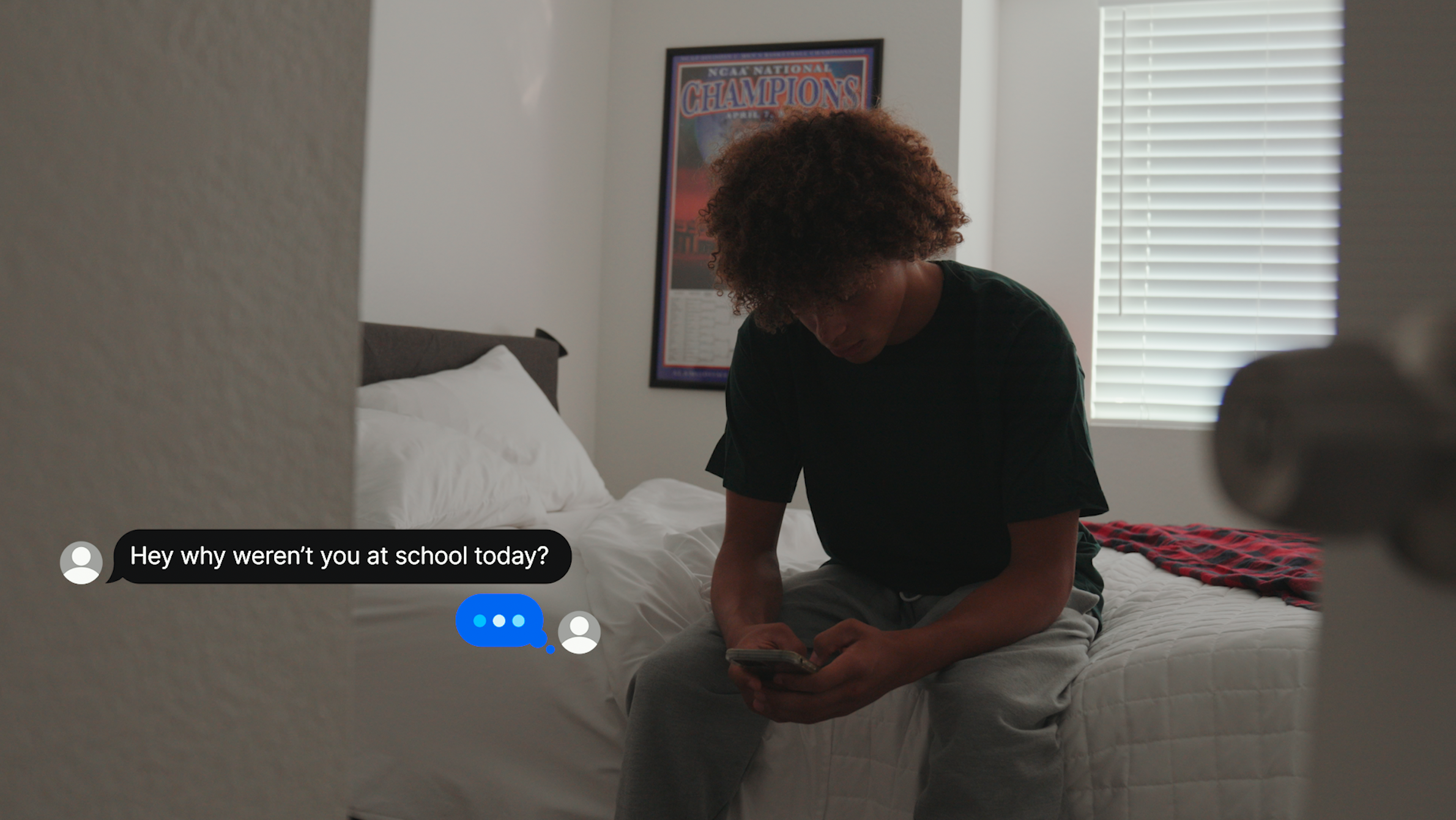Proactive Leadership: 5 Tactics to Help Safeguard Your School Staff Against Burnout
As a school leader, you’re well acquainted with burnout. It’s a potential occupational hazard for educators, no matter what their role. You may have...
6 min read
Care Solace Mar 20, 2024 8:35:49 AM
.png)
By Christine Rambert, Child and Adolescent Therapist at Valera Health
Not so long ago, if you were a teen-targeted by a bully, you probably fended for yourself. You knew to exercise caution in areas where you might be vulnerable, like the school bus or the cafeteria. Once the final bell of the day rang, the countdown to being safe at home could begin. Your parents may have been totally unaware of the situation and the stress you undoubtedly coped with.
Parents today are generally more attentive to their children’s sense of health and well-being at school. That means that they’re also motivated to protect their children from the negative, long-term effects of bullying. But when bullying happens online, the challenge of defending children from attack is formidable — as the bully is both invisible and always-present in their devices.
If you’ve discovered your child is being bullied online, there are steps you can take immediately. And instead of assuming your child will crumble under the weight of their cyberbullying experience, you can have great hope for them. Children who experience cyberbullying have a unique opportunity to learn self-respect and self-awareness — and those skills pay dividends well into adulthood.
Some online conflicts are “normal.” You and your child should talk openly about the difference between normal conflict and cyberbullying — ideally before they begin using social media. Quarrels, debates, teasing, sarcasm, exclusion: These are things unpleasant to manage, but entirely normal.
Cyberbullying isn’t run-of-the-mill teen conflict. It’s repeated, deliberate, and persistent aggressive behavior targeted at an individual online. Social media, email, chat rooms, and messaging apps are the new school buses and cafeterias. Examples of cyberbullying include:
Harassment in the form of offensive, threatening, or abusive messages.
Spreading of false rumors
Constant monitoring of their location and activities by someone other than a parent
Name-calling including discriminatory or prejudiced content that targets a victim’s race, religion, gender, or other characteristics
Sharing of suggestive photos and comments that aim to shame, humiliate, threaten, or blackmail the victim
Encouraging self-injury/harm through impersonation, isolation, and intimidation
Cyberbullying is usually marked by a power imbalance (for instance, the bully may have more social capital). Sometimes, online comments lead to bystander involvement and physical violence.
The Pew Research Center reports that 46% of surveyed kids (ages 13-17) have been bullied online. This same report reveals that “harassed teens are also twice as likely as their peers who report no abuse to say parents have done a poor job of combatting online harassment and bullying.”
In other words, many cyberbullied kids feel their parents are failing to protect them.
As a parent, you may feel alarmed by this news. If your child is keeping their cyberbullying experience a secret (and for many reasons, they might be), how are you to know, much less intervene?
The best strategy starts with being a keen observer of your child. If you’re noticing any of the following, a focused conversation about cyberbullying may be necessary:
If you are having a difficult time initiating or managing an honest conversation with your child, it’s an ideal time to check in with yourself. Are you approaching the conversation with calmness and with a willingness to listen without judgment? Your child needs to feel completely safe with you in order to be honest about their cyberbullying experience.
It’s wise to check in with your child’s teachers and the school counselor to see if they have noticed changes. The counselor may ask your child some of these questions to determine if cyberbullying is occurring:
If your child answers yes to any of these questions, ask them to show you the messages or posts that they're being bothered by. You can also reassure them that they're not alone and that you’re there to help them.
You should also document the cyberbullying and ask your child to adjust their privacy settings and mute their notifications. If they can stay offline — at least temporarily — exposure to the bully and stress will be reduced.
Being the victim of harassment and threats can be quite traumatizing, and your child will benefit from mental health support both during and after their cyberbullying experience. In fact, your child may be more open and receptive to learning about themselves than ever before.
If your child doesn’t have a therapist, check in with the school counselor. Ask what mental health resources are available to you and your child. If your school district has partnered with Care Solace, all you need to do is provide some basic information about your child and their therapy preferences — they’ll quickly help you find a provider.
Connecting your child with a Dialectical Behavioral Therapy (DBT) therapist can be a good choice. DBT combines elements of cognitive-behavioral therapy (CBT) with mindfulness techniques. It was developed to help individuals manage emotions, improve interpersonal relationships, and cope with distressing situations — like cyberbullying.
DBT operates with four core modules, each of which can empower a child who is or has experienced cyberbullying:
With practice, DBT techniques can profoundly change the way your child sees the world and themselves. DBT isn’t for everyone, of course. No matter which therapist your child chooses, encourage them to give it at least a few sessions (unless there is obvious misalignment).
Therapy, like any other relationship, takes time to grow and be comfortable.
Click here to watch the full webinar recording
You and your child don’t have to navigate cyberbullying alone. Care Solace partners with school districts to ensure students and their families have access to mental health resources 24/7/365, no matter your insurance situation.
.png?width=276&height=230&name=Blog%20Author%20Photo%20(8).png)
Child and Adolescent Therapist at Valera Health
Christine Rambert has 15 years of clinical experience providing psychotherapeutic services to culturally and age diverse populations, with specialization in child and adolescent therapy. Bilingual in Spanish, she is a SIFI certified supervisor, and has provided administrative management of clinic and school based mental health programs. She has a particular interest in clinical education and training. Christine has extensive training in therapeutic modalities which include DBT, ACT and TF-CBT. She earned an MA in Sociology/Anthropology from Northeastern University and an MSW from NYU Silver School of Social Work. Christine is also a registered yoga teacher (RYT-200) with Yoga Alliance.

As a school leader, you’re well acquainted with burnout. It’s a potential occupational hazard for educators, no matter what their role. You may have...
-1.png)
The responsibilities that rest squarely on the shoulders of a school district decision-maker can be heavy indeed. School district leaders must be a...

Schools are often the first line of defense in supporting student mental health and preventing youth suicide. Recognizing this responsibility,...